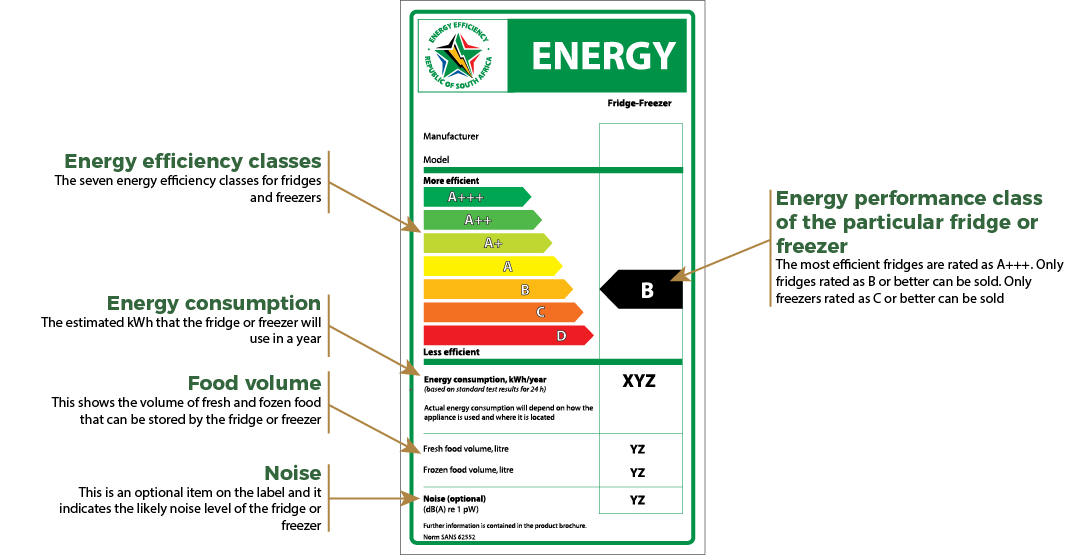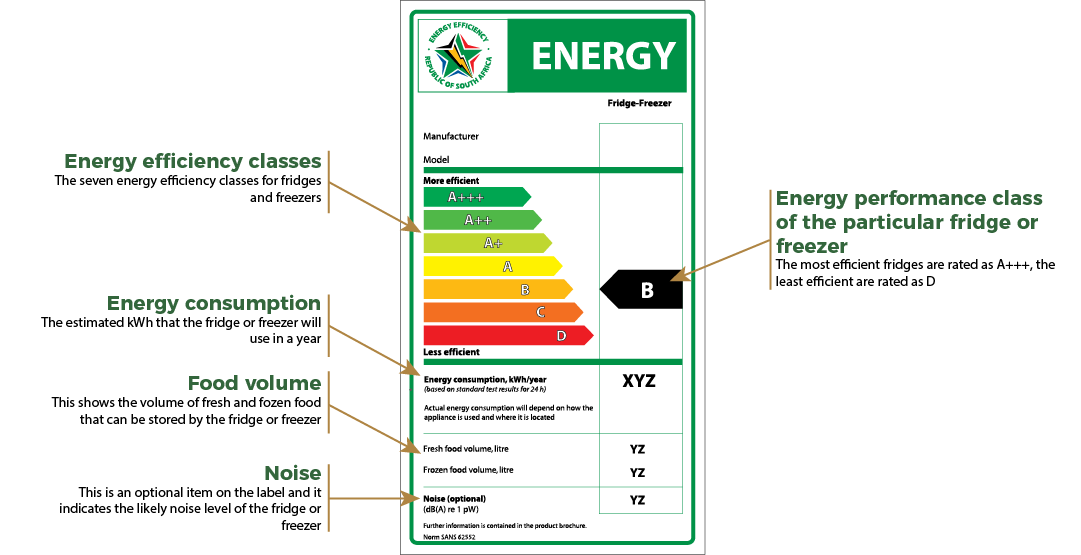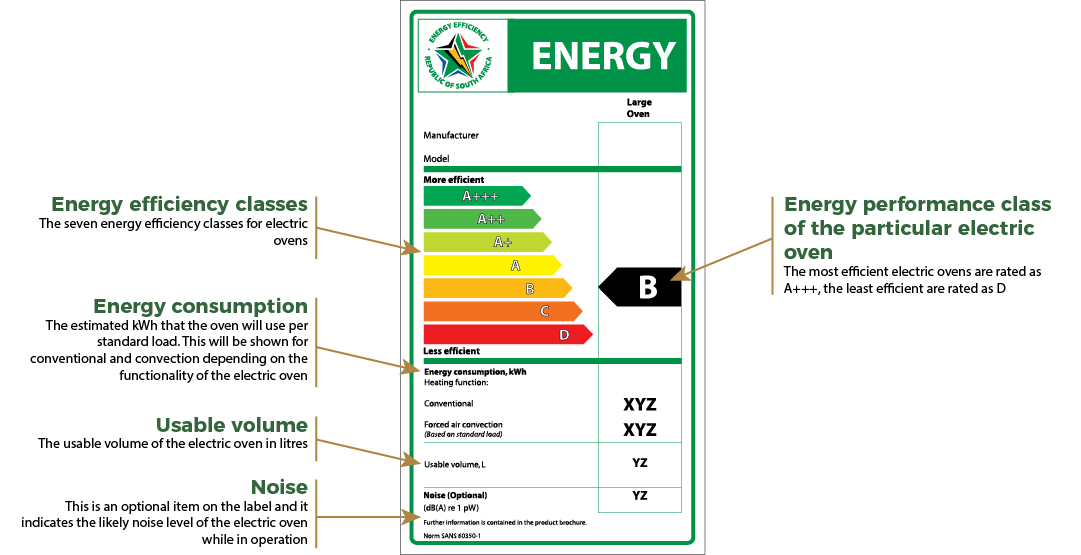Fridges and Freezers
Since fridges and freezers are operated 24 hours a day, every day of the year, they can be significant users of energy in households. Purchasing a more efficient fridge or freezer will save electricity for years to come.
To protect consumers from purchasing inefficient fridges and freezers, Minimum Energy Performance Standards (MEPS) have been set for fridges and freezers. Currently, only fridges with an Energy Efficiency Rating of Class B or better can be sold. With regards to freezers, those with an Energy Efficiency Rating of Class C or better can be sold. In terms of fridge-freezer combinations those with a Energy Efficiency Rating of Class B or better can be sold.
A key consideration for consumers when buying a fridge or freezer is size. The larger the fridge or freezer, the more electricity the appliance will use. Consumers should carefully consider the amount of fridge or freezer space required in their households and purchase an appliance with a capacity appropriate to their household’s needs.

Understanding the energy efficiency label
Fridges and freezers being sold must be labelled with a South African Energy Efficiency Label to help consumers understand the relative energy efficiency of different fridges and freezers. The image below shows a sample of a label for a fridge-freezer with an explanation of the key elements of the label.

Calculating how much the appliance will cost to run
To calculate the annual running costs of a fridge or freezer, multiply the kWh figure given on the label by the cost of electricity in your municipality. You can find the kWh cost of electricity in your municipality by looking at your electricity bill.
For example if the label indicates that the fridge or freezer will use 254 kWh per year, and where you live a kWh of electricity costs R2 (including VAT), the annual cost of running the fridge or freezer will be R508.
Appliance Energy Calculation Tools were created to aid consumers to make more informed decisions by calculating the long term cost for running an appliance. Click here to calculate the running costs and CO2 emissions for fridges and freezers.
{Annual Energy Consumption}
x {Cost of Electricity in your municipality}
= Annual running cost of the appliance
254 kWh X R2 per kWh = R508
Tips for using your appliance most efficiently
 Keep the doors closed
Keep the doors closed
When a fridge or freezer is opened, warm air is let inside and this increases the amount of electricity needed to keep the contents cool. Don’t open fridges or freezers unnecessarily.
 Ensure the seals work
Ensure the seals work
If the seals of fridges and freezers are not working properly, warm air will be introduced, increasing the amount of electricity needed to keep the contents cool. Replace seals of fridges and freezers that are no longer sealing properly.
 Make sure it’s the right temperature
Make sure it’s the right temperature
Lowering the temperature setting of a fridge or freezer increases the amount of electricity needed to operate the appliance. Read the instruction manual of your fridge or freezer and ensure that it is not set unnecessarily low.
 Defrost Periodically
Defrost Periodically
Ice build-up in a fridge or freezer prevents the appliance from operating efficiently. Defrost your fridge and freezers whenever ice builds up.
 Keep it cool
Keep it cool
Placing a fridge or freezer in the sun or next to appliances that generate heat will increase the amount of electricity needed to keep the contents cool. If possible, locate fridges and freezers in the coolest part of the kitchen.
 Clean the Coils
Clean the Coils
Ensuring that the coils at the back of a fridge are clear of dust allows for better airflow, meaning that the compressor of the appliance has less work to do to keep the fridge cool.
 Keep hot food out
Keep hot food out
Placing heated food in a fridge or freezer increases the internal temperature and increases the amount of electricity used to keep the contents cool. Allow food to cool before placing it in a fridge or freezer.










